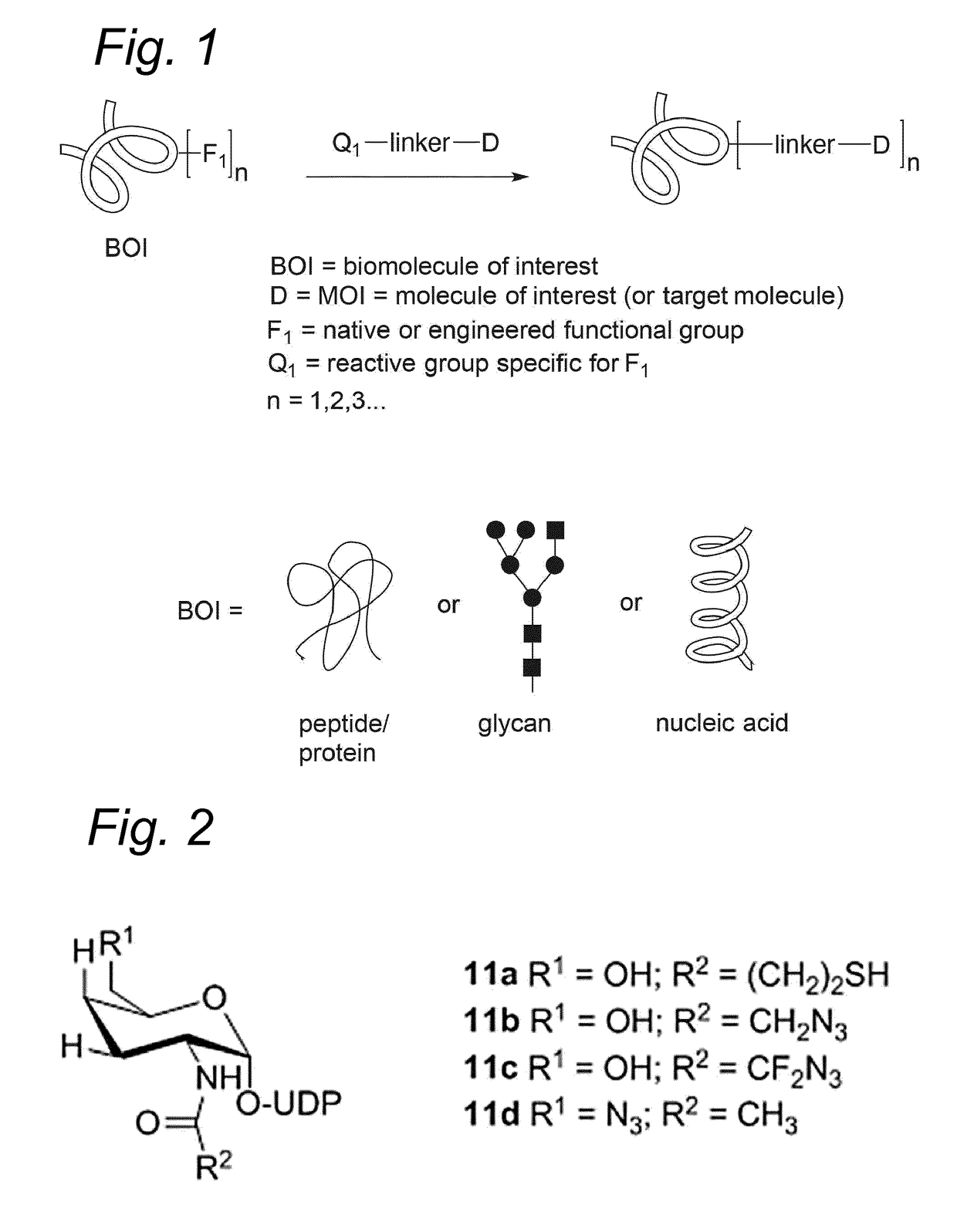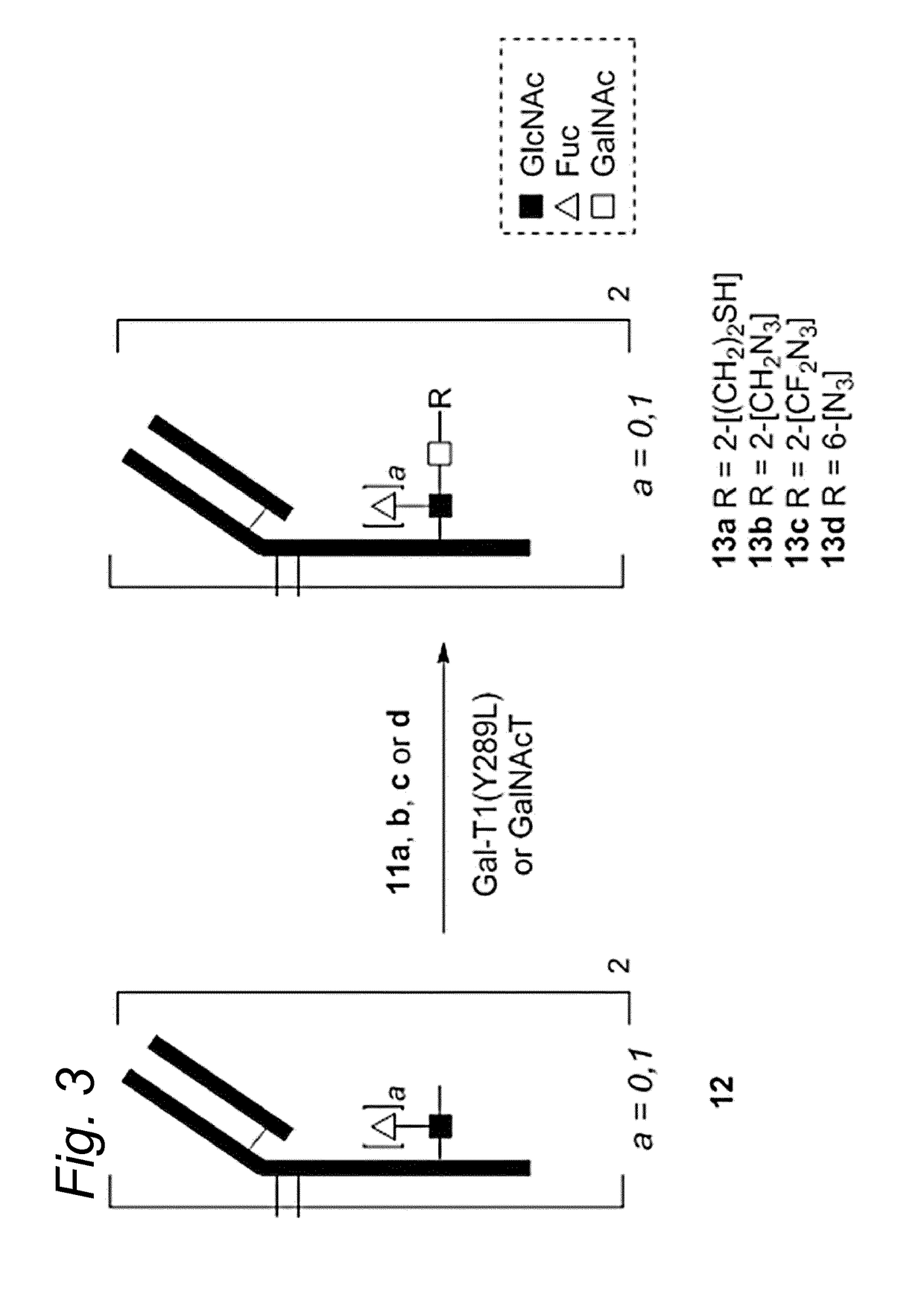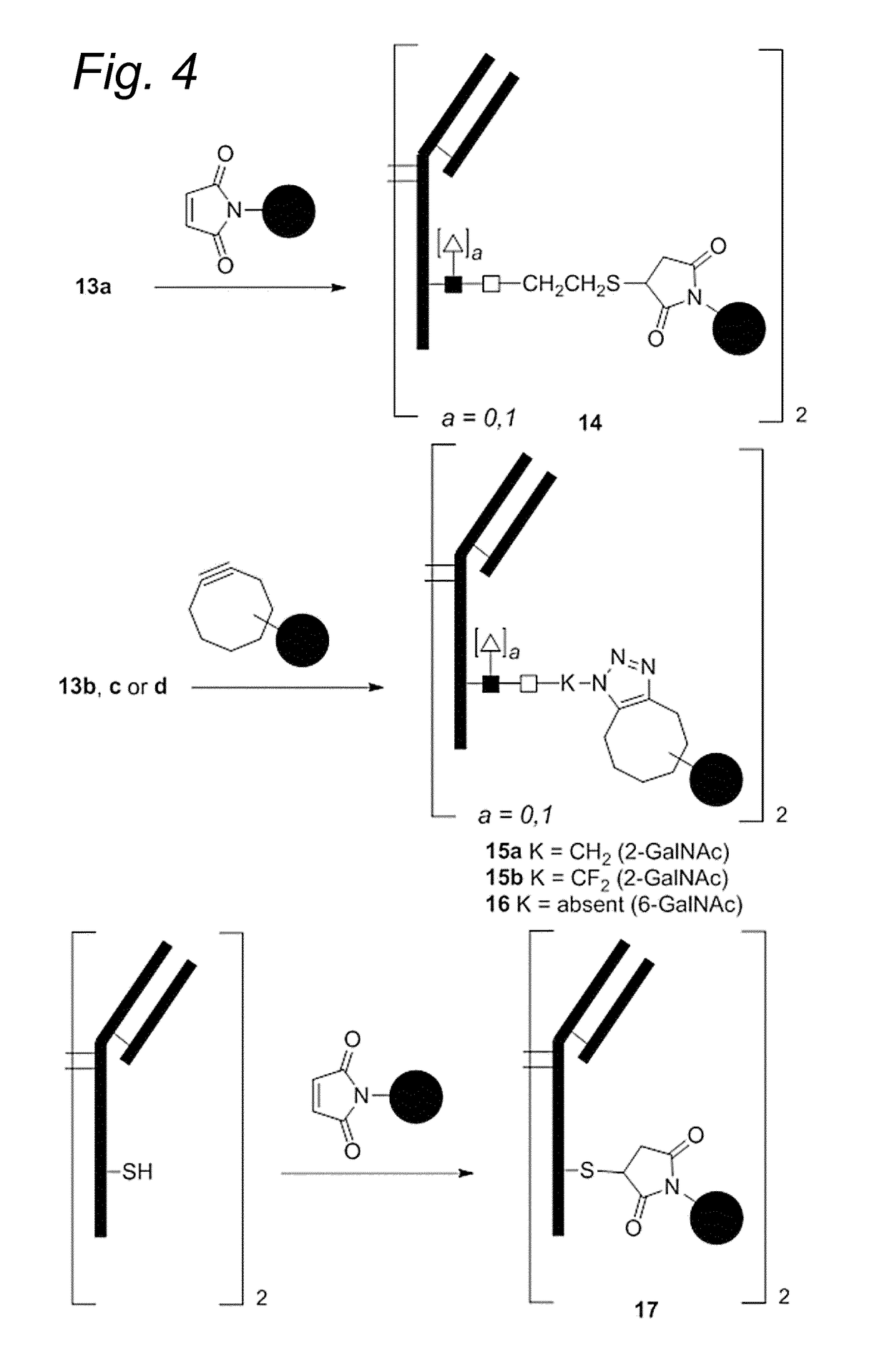Improved sulfamide linkers for use in bioconjugates
a sulfamide and bioconjugation technology, applied in the field of bioconjugation, can solve the problems of limiting the choice of reactive groups, compromising conjugation efficiency, and high restrictions on biomolecules, so as to improve conjugation efficiency, reduce aggregation, and increase stability
- Summary
- Abstract
- Description
- Claims
- Application Information
AI Technical Summary
Benefits of technology
Problems solved by technology
Method used
Image
Examples
examples 1-3
of Compound 25
[0429]The synthetic approach towards compound 25 is depicted here below.
example 1
on of Compound 21
[0430]To a solution of (R)-(+)-N-(tert-butoxycarbonyl)-O-(tert-butyldimethylsilyl)serinol (26; 50 mg, 0.164 mmol) in DCM (1.6 mL) under a nitrogen atmosphere was added chlorosulfonyl isocyanate (14.3 μL, 0.164 mmol) and the resulting mixture was stirred for 15 min. Then, Et3N (68 μL, 0.491 mmol) was added, followed by benzylamine (18 μL, 0.164 mmol). After 1 h, DCM (10 mL) and sat. NH4Cl solution (10 mL) were added. The layers were separated and the water phase was extracted with DCM (2×10 mL) and EtOAc (3×10 mL). The combined organic layers were dried over sodium sulfate, filtered and concentrated in vacuo. Flash chromatography (10-50% EtOAc in pentane) afforded the product (72 mg, 0.14 mmol, 85%). LRMS (ESI+) calcd for C22H39N3O7SSi (M+H+) 518.24, found 518.28.
example 2
on of Compound 22
[0431]To a solution of compound 21 (72 mg, 0.14 mmol) in DCM (1 mL) was added TFA (1 mL) and the reaction mixture was stirred at rt overnight. The reaction was concentrated and co-evaporated with toluene (2×15 mL) to afford the crude product. 1H-NMR (400 MHz, CD3OD): δ 7.38-7.24 (m, 5H), 4.29-4.18 (m, 4H), 3.91-3.64 (m, 3H), 3.54-3.43 (m, 1H), 0.98-0.86 (m, 5H), 0.15-0.04 (m, 5H). LRMS (ESI+) calcd for C17H31N3O5SSi (M+H+) 418.18, found 418.20.
PUM
 Login to View More
Login to View More Abstract
Description
Claims
Application Information
 Login to View More
Login to View More - R&D
- Intellectual Property
- Life Sciences
- Materials
- Tech Scout
- Unparalleled Data Quality
- Higher Quality Content
- 60% Fewer Hallucinations
Browse by: Latest US Patents, China's latest patents, Technical Efficacy Thesaurus, Application Domain, Technology Topic, Popular Technical Reports.
© 2025 PatSnap. All rights reserved.Legal|Privacy policy|Modern Slavery Act Transparency Statement|Sitemap|About US| Contact US: help@patsnap.com



